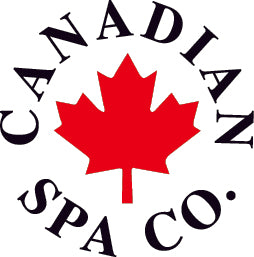When shopping for a hot tub, insulation is one of the key factors to consider for energy efficiency and maintaining the perfect soak temperature. You might be advised or sold on the idea that a higher R-value means better hot tub insulation. While R-value is a numerical measure of how well a material resists heat loss, it is only one piece of the puzzle in determining the effectiveness of how much heat your spa will retain. Let’s dive into why R-value is not the be-all and end-all.
The Limits of R-Value
Here is a breakdown of some of the reasons why an R-Value rating doesn’t give you the full story:
Lab vs. Real-World Conditions
The R-value itself was developed over 75 years ago to evaluate insulation in ideal lab conditions: no wind, moisture, or thermal bridging. In real life, factors like air leaks and temperature changes reduce its reliability as a standalone measure.
Thermal Bridging
Structural components, like framing, can create pathways for heat to escape, bypassing even the best insulation.
Moisture Impact
In moist environments, even a small amount of water can reduce R-value by over 50%, compromising efficiency and durability.
What Really Matters
Airtight Sealing: Prevents heat loss from air leaks. Canada Spa Company hot tubs all come with an air tight ABS molded pan floor to reduce the risk of heat loss.
High-Density Closed-Cell Foam: Our Canadian Spa Company hot tubs use high-density closed-cell foam and a heat retention blanket to surround the interior, locking in warmth while resisting moisture.
Moisture Management: Vapour barriers and water-resistant materials maintain insulation performance over time.
Smart Design: Insulated covers, efficient pumps, and well-planned layouts minimize energy waste.
Air Control Systems: Most hot tubs use airflow to create bubbles and enhance the jets’ massage power. However, the way this feature is designed can significantly impact the spa’s efficiency. Canadian Spa Company hot tubs are engineered to draw preheated air from within the spa’s cabinet and direct it into the water, helping to minimize heat loss. In contrast, many fully foam-insulated hot tubs pull in cold air from outside the spa, which can cool the water during use.
The Bottom Line
R-value alone doesn’t guarantee insulation efficiency. Effective insulation comes from a well-engineered system that balances airtightness, moisture control, and thoughtful design. With features like closed-cell foam and heat retention blankets, Canadian Spa Company hot tubs deliver energy efficiency that works in the real world—not just the lab.

